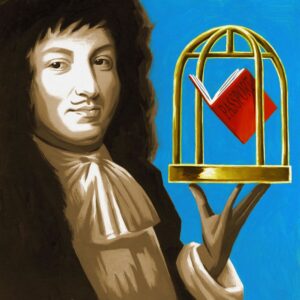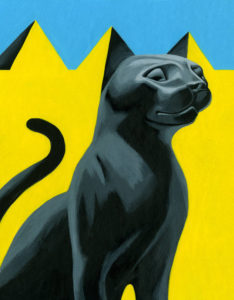France’s Louis XIV first required international travelers to carry an official document. By the 20th century, most other countries did the same for reasons of national security.
August 12, 2022
As anyone who has recently applied for a passport can attest, U.S. passport agencies are still catching up from the pandemic lockdown. But even with the current delays and frustrations, a passport is, quite literally, our pass to freedom.
The exact concept did not exist in ancient times. An approximation was the official letter of introduction or safe conduct that guaranteed the security of the traveler holding it. The Hebrew Bible recounts that the prophet Nehemiah, cup-bearer to Artaxerxes I of Persia, requested a letter from the king for his mission to Judea. As an indispensable tool of international business and diplomacy, such documents were considered sacrosanct. In medieval England, King Henry V decreed that any attack on a bearer of one would be treated as high treason.
Another variation was the official credential proving the bearer had permission to travel. The Athenian army controlled the movements of officers between bases by using a clay token system. In China, by the time of the Tang dynasty in the early 7th century, trade along the Silk Road had become regulated by the paper-backed guosuo system. Functioning as a pass and identity card, possession of a signed guosuo document was the only means of legitimate travel between towns and cities.
The birth of the modern passport may be credited in part to King Louis XIV of France, who decreed in 1669 that all individuals, whether leaving or entering his country, were required to register their personal details with the appropriate officials and carry a copy of their travel license. Ironically, the passport requirement helped to foil King Louis XVI and Marie Antoinette’s attempt to escape from Paris in 1791.
The rise of middle-class tourism during the 19th century exposed the ideological gulf between the continental and Anglo-Saxon view of passports. Unlike many European states, neither Great Britain nor America required its citizens to carry an identity card or request government permission to travel. Only 785 Britons applied for a passport in 1847, mainly out of the belief that a document personally signed by the foreign secretary might elevate the bearer in the eyes of the locals.
By the end of World War I, however, most governments had come around to the idea that passports were an essential buttress of national security. The need to own one coincided with mass upheaval across Europe: Countries were redrawn, regimes toppled, minorities persecuted, creating millions of stateless refugees.
Into this humanitarian crisis stepped an unlikely savior, the Norwegian diplomat Fridtjof Nansen. In 1922, as the first high commissioner for refugees for the League of Nations, Nansen used his office to create a temporary passport for displaced persons, enabling them to travel, register and work in over 50 countries. Among the hundreds of thousands saved by a “Nansen passport” were the artist Marc Chagall and the writer Vladimir Nabokov. With unfortunate timing, the program lapsed in 1938, the year that Nazi Germany annexed Austria and invaded Czechoslovakia.
For a brief time during the Cold War, Americans experienced the kind of politicization that shaped most other passport systems. In the 1950s, the State Department could and did revoke the passports of suspected communist sympathizers. My father Carl Foreman was temporarily stripped of his after he finished making the anti-McCarthyite film classic “High Noon.”
Nowadays, neither race nor creed nor political opinions can come between an American and his passport. But delays of up to 12 weeks are currently unavoidable.






